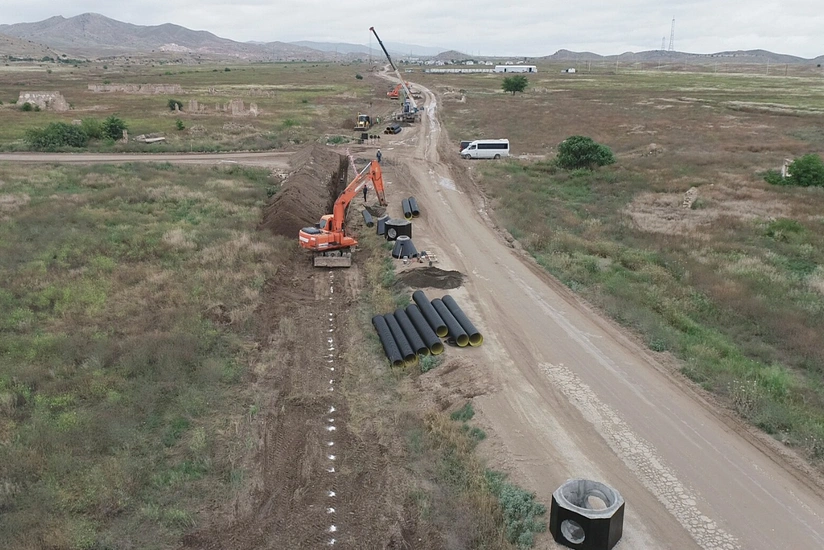Drinking and wastewater infrastructures being created in Azerbaijan's Jabrayil
- 31 May, 2024
- 11:17

The State Water Resources Agency of Azerbaijan is creating drinking and wastewater infrastructures in the city of Jabrayl, Report informs, citing the agency.
According to the agency, the construction project of water supply and sewage systems of Jabrayil city is planned to meet the needs of 15,000 people by 2040, taking into account perspective development. One geological exploration well was dug in 2023 in order to provide the city of Jabrayil with stable and high-quality drinking water. Productivity and water quality indicators of the selected source allow to supply the city and surrounding villages with drinking water. A total of nine subartesian wells are planned to be drilled in the city's north, and work has already started in this direction. At the initial stage, three wells will be dug. New wells will be dug as the city's population grows.
Within the framework of the project, six reservoirs with a total capacity of 7,000 cubic meters will be built in Jabrayil. Currently, the construction of a 2,000 cubic meter reservoir and a three km long main water pipeline to ensure the delivery of water to the city of Jabrayil, as well as a six km long sewage collector, which ensures the transfer of wastewater to a treatment plant, is ongoing.
Some 52 km of drinking water, 38 km of wastewater and 40 km of rainwater networks will be built in Jabrayil city. A wastewater treatment plant with a capacity of 6,000 cubic meters per day will be built to purify and neutralize the wastewater that will be formed in the city. The treatment plant and collector will allow the collection and treatment of wastewater from Jabrayil city as well as some villages.
The new infrastructure created in Jabrayl will be managed using the Smart water system. Within the framework of the project, each infrastructure element will be provided with a SCADA system.
Taking into account the beginning of settlement in the Horovlu and Shukurbayli villages of Jabrayil district within the Great Return program, preparations are underway for the creation of water supply systems in those villages.





